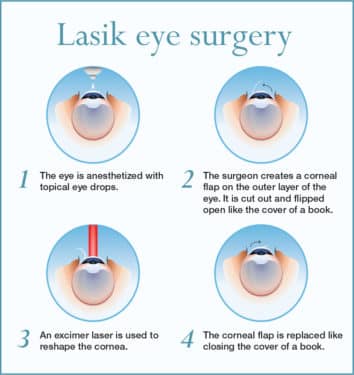Web Content Writer-Hendricks Andreassen
Have you ever took into consideration Refractive Lens Exchange (RLE) as an alternative for vision improvement? While it isn't as extensively reviewed as LASIK, RLE could be a game-changer for your vision. Many individuals neglect its advantages, assuming typical techniques are their only selection. Yet what are the real benefits, and what might your ophthalmologist not be informing you about this treatment? Let's check out the ins and outs of RLE together.
Comprehending Refractive Lens Exchange: The Essentials
Refractive lens exchange (RLE) is a surgical procedure that can substantially boost your vision, particularly if you're managing presbyopia or serious refractive errors.
Throughout Lasik Vs Lasek , your eye specialist eliminates your eye's natural lens and changes it with an artificial one tailored to your vision requires. This treatment can deal with nearsightedness, farsightedness, and astigmatism, offering you clearer vision without relying on glasses or get in touch with lenses.
The surgical procedure is normally quick, taking less than an hour, and the majority of patients experience marginal discomfort. Lasik Astigmatism Cost is relatively quickly, allowing you to return to your everyday activities shortly after.
If you're taking into consideration RLE, seeking advice from your optometrist can help you figure out if it's the ideal choice for you.
Secret Distinctions Between RLE and Typical Cataract Surgery
While both refractive lens exchange (RLE) and typical cataract surgical procedure include replacing the eye's natural lens, their key goals and client accounts vary considerably.
RLE is aimed at people seeking to reduce their dependancy on glasses or get in touch with lenses due to refractive errors, commonly before cataracts develop. On the other hand, typical cataract surgical procedure usually targets clients that've developed cataracts, which cloud the lens and impair vision.
The lenses utilized in RLE can offer a broader range of vision correction, while standard cataract surgical procedure typically includes fundamental monofocal lenses.
In addition, RLE candidates are typically younger and in great general health and wellness, whereas cataract patients might be older and have other health concerns.
Choosing the right procedure depends upon your particular vision needs and scenarios.
Potential Benefits and Considerations of RLE
If you're considering refractive lens exchange (RLE), you'll discover numerous possible advantages that might improve your lifestyle.
RLE can provide you with more clear vision, decreasing or removing the demand for glasses or contact lenses. It uses a possibility to resolve presbyopia and other refractive mistakes simultaneously, often enhancing your general visual acuity.
Furthermore, RLE can be a fantastic choice if you're not a suitable prospect for LASIK. However, it is necessary to consider the factors to consider, like the expense, possible dangers, and the recuperation duration.
Reviewing your particular demands with your optometrist can aid you make an informed decision, ensuring you choose the most effective path for your vision modification.
Conclusion
Finally, refractive lens exchange uses a special remedy for vision modification that exceeds what LASIK can give. It's vital to consider the benefits against possible risks and expenses before making a decision. Do not wait to ask your eye doctor the hard concerns to ensure you totally understand the procedure and its effects for your vision. With the appropriate details, you can confidently select the best alternative for your eyes and way of living.

